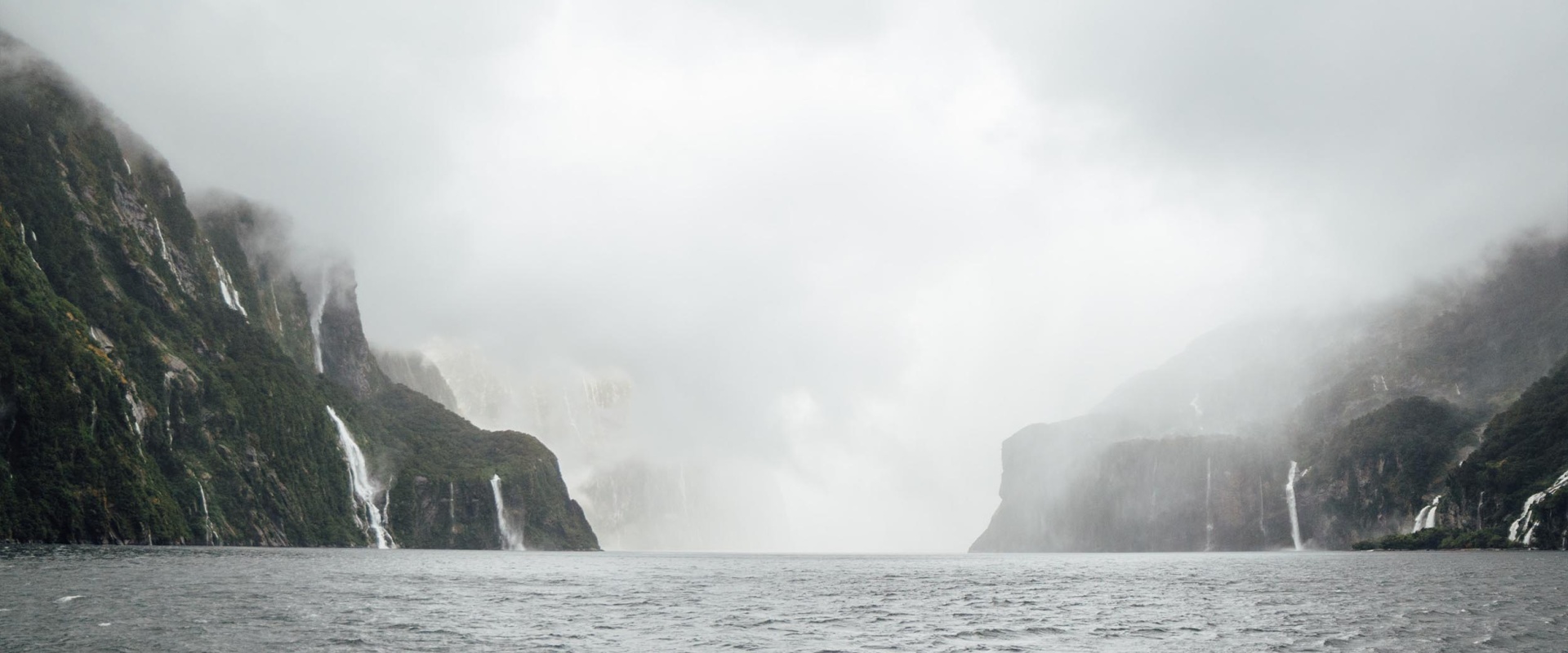Keeping you safe in our wild and beautiful backyard
Piopiotahi Milford Sound is a place of exceptional natural beauty, carved by glaciers and surrounded by towering peaks and lush rainforest. As part of Fiordland National Park, New Zealand’s most remote and rugged region, this incredible environment also brings with it a range of natural hazards.
While our team takes every measure to operate safely and keep you informed, it’s important that you are aware of potential risks so you can be prepared and confident during your visit.
Natural Hazards
Earthquakes
Piopiotahi Milford Sound sits at the southern end of the Alpine Fault, one of the world’s major geological features. This fault is known to rupture with major earthquakes (Magnitude 8+) roughly every 300 years, with the last event recorded in 1717 AD. A future rupture could cause strong shaking, trigger landslides and tsunamis, and damage critical infrastructure such as access roads. More information on this Alpine Fault can be found here
What to do:
- Drop, Cover and Hold during shaking.
- If the earthquake is Long or Strong, move immediately to higher ground in case of a tsunami.
Tsunamis
Tsunamis in Piopiotahi Milford Sound (even underwater ones) can result from both offshore earthquakes and localised landslides into the fiord. These events can displace large volumes of water and cause dangerous wave surges with little to no warning.
What to do:
- If you feel a strong or long earthquake, don’t wait for an alert. Move inland or uphill immediately.
- Watch for unusual sea behaviour: a sudden rise or fall in water levels or loud sea noises.
Severe Weather Events
Flooding
Piopiotahi Milford Sound receives more than 7 metres of rainfall annually, often with intense downpours reaching up to 200 mm in just 24 hours. The region’s steep terrain and low soil absorption mean water flows quickly into rivers and fiords, which can overwhelm roadways and isolate the area.
What to do:
- Be alert for rising water and avoid travel during sustained heavy rainfall.
- Do not attempt to walk, drive or swim through floodwaters, which may be fast-moving and contaminated.
Landslides
Heavy rain and steep, fragile terrain make landslides a regular occurrence in the region. Coastal landslides are often vegetation-based due to thin topsoil, while inland slides may contain rock and soil. Earthquakes can also trigger major landslides, which may lead to tsunamis.
What to do:
- Stay clear of unstable slopes, especially after rainfall or seismic activity.
- Watch for signs of movement like falling debris, cracks in the ground or leaning trees.
- Follow all safety signs and staff directions.
Snow & Avalanches
From May to November, snow and avalanche risks can affect the alpine highway into Piopiotahi Milford Sound. The Milford Road Alliance operates a world-class avalanche control programme to monitor and manage risk, but avalanches can still occur and may temporarily close the road.
What to do:
- Check the latest road status before travelling, especially in winter or spring.
- If self-driving, ensure your vehicle is equipped with snow chains and you know how to fit them.
- Allow extra travel time and be prepared for rapid weather changes in alpine areas.
Prepare Before You Travel
- Check weather and road updates at MetService Southland and NZTA Journey Planner
- Be self-reliant: Mobile reception is limited, and weather conditions can change fast.
- Let someone know your plans, especially if self-driving.
In An Emergency
- Call 111 for Fire, Police or Ambulance
- Follow instructions from crew and emergency services
- If advised to evacuate, do so without delay
Final Tip
Piopiotahi Milford Sound is extraordinary because of its wild, remote character. With a little awareness and preparation, you can safely experience everything this magical place has to offer.
Ngā mihi,
The Pure Milford Team

